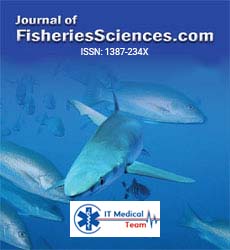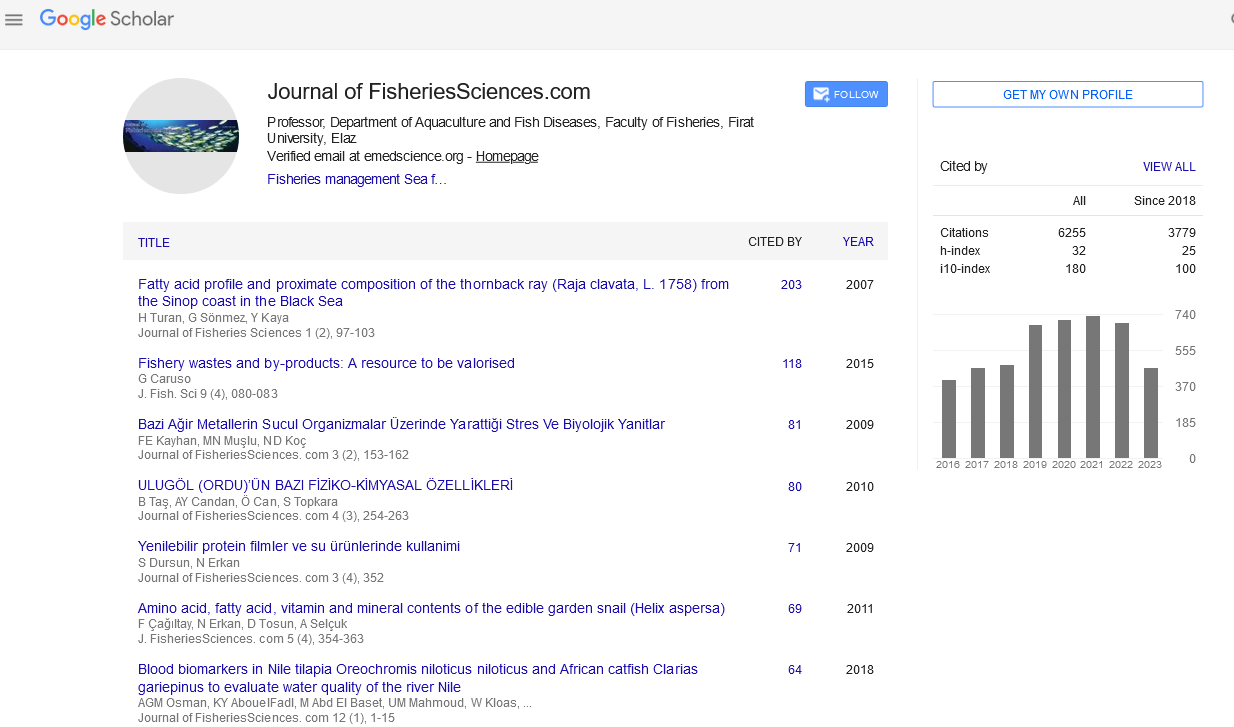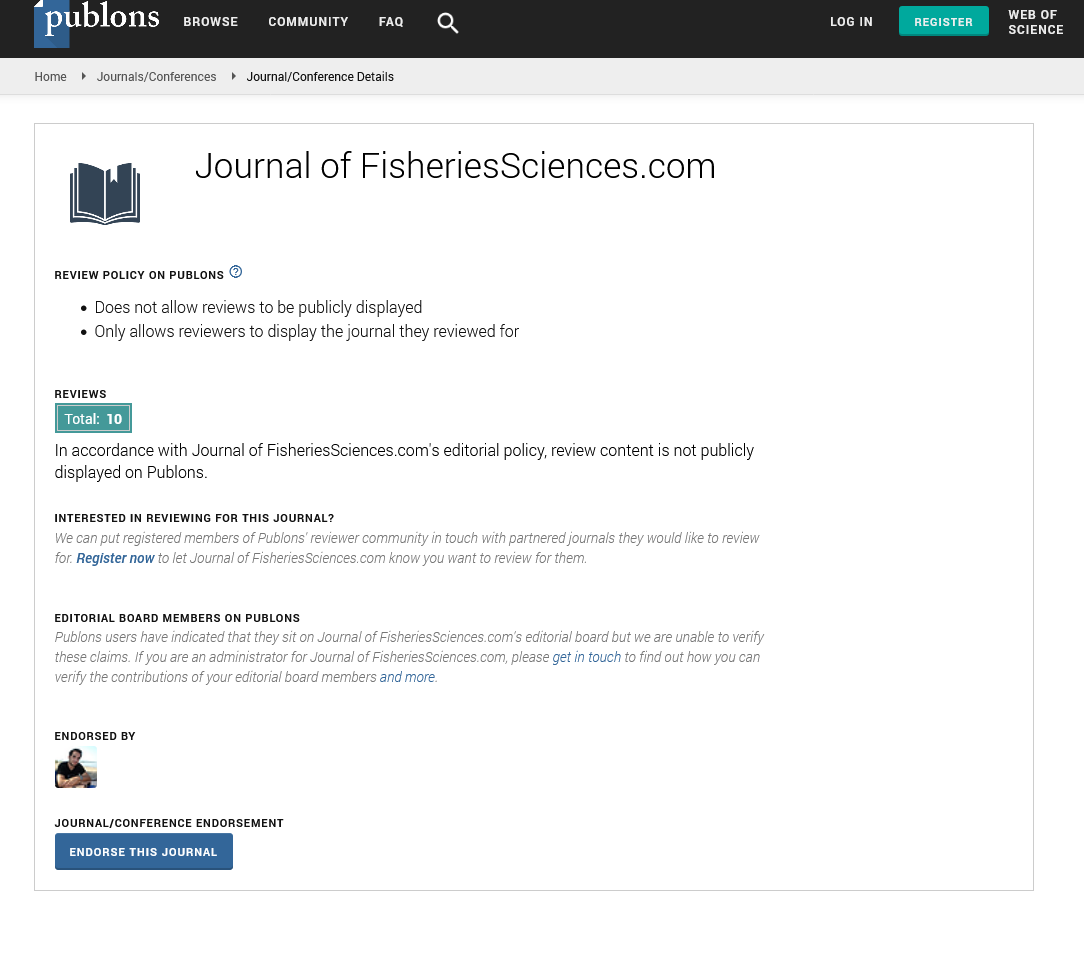Perspective - (2024) Volume 18, Issue 6
Habitat Restoration and its Impact on Fisheries
Julie Huxley*
Department of Biology and Ecology of Fishes, University of Hawali, Hawali, Kuwait
*Correspondence:
Julie Huxley, Department of Biology and Ecology of Fishes, University of Hawali, Hawali,
Kuwait,
Email:
Received: 03-Dec-2024, Manuscript No. IPFS-24-15414;
Editor assigned: 06-Dec-2024, Pre QC No. IPFS-24-15414 (PQ);
Reviewed: 20-Dec-2024, QC No. IPFS-24-15414;
Revised: 23-Dec-2024, Manuscript No. IPFS-24-15414 (R);
Published:
31-Dec-2024
Introduction
Habitat restoration is a critical process in the conservation and
management of aquatic ecosystems. For fisheries, restoring
habitats can enhance fish populations, improve ecosystem
health and support biodiversity. As human activities continue to
affect aquatic environments, understanding and implementing
effective habitat restoration practices are essential for sustaining
fisheries and ensuring their long-term viability.
Description
The importance of aquatic habitats
Aquatic habitats, including rivers, lakes, wetlands and
estuaries, provide essential resources for fish and other aquatic
organisms. These habitats offer food, shelter and breeding
grounds, which are crucial for the survival and reproduction of
fish species. Degradation of these habitats due to pollution,
overfishing and land development can lead to declines in fish
populations and disrupt ecological balance.
Types of habitat degradation
Several factors contribute to the degradation of aquatic
habitats. Pollution from agricultural runoff, industrial discharges
and sewage can lead to nutrient enrichment and harmful algal
blooms, which degrade water quality and reduce oxygen levels.
Deforestation and urbanization can lead to increased
sedimentation, altering stream and riverbed structures.
Overfishing and destructive fishing practices can damage aquatic
habitats and reduce fish populations. Understanding these
impacts helps guide effective restoration strategies.
Habitat restoration techniques
Effective habitat restoration involves a range of techniques
tailored to address specific types of degradation. Some common
methods include:
Stream and river restoration: Techniques such as bank
stabilization, riparian buffer restoration and stream remeandering
are employed to improve stream health. These
practices help reduce erosion, enhance water quality and
provide better habitat for fish.
Wetland restoration: Re-establishing wetlands involves
restoring natural hydrology, removing invasive species and
replanting native vegetation. Wetlands serve as vital nurseries
for many fish species and help filter pollutants from water.
Estuarine restoration: Estuarine areas, where freshwater
meets saltwater, are crucial for many fish species. Restoration
efforts may include removing barriers to tidal flow, restoring
natural sedimentation processes and replanting eelgrass and
other important vegetation.
Marine habitat restoration: In marine environments, coral
reef restoration, mangrove reforestation and seagrass bed
restoration are key strategies. These habitats support diverse
marine life and are critical for the health of coastal fisheries.
Case studies in habitat restoration
Several successful case studies highlight the benefits of
habitat restoration for fisheries:
The Chesapeake Bay restoration: Efforts to restore the
Chesapeake Bay, one of the largest estuaries in the United
States, have focused on reducing nutrient pollution, restoring
wetlands and improving water quality. These efforts have led to
increased populations of important fish species such as striped
bass and blue crab.
The Elwha River dam removal: The removal of the Elwha
River dams in Washington state allowed the river to return to its
natural flow. This restoration has resulted in the return of
salmon and other fish species to their historical spawning
grounds, demonstrating the positive impact of habitat
restoration on fish populations.
Great Barrier Reef restoration projects: Various initiatives in
the Great Barrier Reef region aim to restore coral reefs by
addressing coral bleaching and promoting coral growth. These
projects have shown improvements in reef health and increased
fish diversity and abundance.
Challenges in habitat restoration
While habitat restoration offers significant benefits, it is not
without challenges. Restoration projects can be complex and
costly, requiring careful planning, monitoring and management.
Additionally, addressing underlying causes of habitat degradation, such as pollution and climate change, is crucial for
the long-term success of restoration efforts.
The role of community and stakeholders
Successful habitat restoration often involves collaboration
among various stakeholders, including government agencies,
non-profit organizations, local communities and researchers.
Engaging local communities in restoration efforts can foster a
sense of stewardship and ensure that restoration activities are
aligned with local needs and priorities.
Future directions
Looking ahead, integrating habitat restoration with broader
ecosystem management and conservation strategies will be
crucial for sustaining fisheries and aquatic ecosystems.
Advancements in technology, such as remote sensing and
environmental DNA analysis, can enhance restoration efforts by
providing valuable data and insights. Additionally, addressing
global challenges such as climate change and ocean acidification
will be essential for protecting and restoring aquatic habitats.
Conclusion
Habitat restoration plays a vital role in supporting healthy
fisheries and sustainable aquatic ecosystems. By addressing the
causes of habitat degradation and implementing effective
restoration techniques, we can enhance fish populations,
improve ecosystem health and contribute to the overall wellbeing
of our natural environment. Continued research,
collaboration and innovation will be key to achieving these goals
and ensuring the long-term viability of our fisheries.
Citation: Huxley J (2024) Habitat Restoration and its Impact on Fisheries. J Fish Sci. Vol.18 No.6






